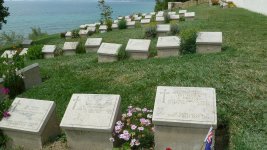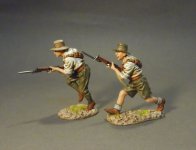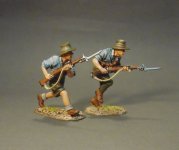THE BATTLE OF GALLIPOLI 1915
With World War I stalled on the Western Front by 1915, the Allied Powers were debating going on the offensive in another region of the conflict, rather than continuing with attacks in Belgium and France. Early that year, Russia’s Grand Duke Nicholas appealed to Britain for aid in confronting a Turkish invasion in the Caucasus. (The Ottoman Empire had entered World War I on the side of the Central Powers, Germany and Austria-Hungary, by November 1914.) In response, the Allies decided to launch a naval expedition to seize the Dardanelles Straits, a narrow passage connecting the Aegean Sea to the Sea of Marmara in northwestern Turkey. If successful, capture of the straits would allow the Allies to link up with the Russians in the Black Sea, where they could work together to knock Turkey out of the war.
The Gallipoli Campaign of 1915-16, also known as the Battle of Gallipoli or the Dardanelles Campaign, was an unsuccessful attempt by the Allied Powers to control the sea route from Europe to Russia during World War I. The campaign began with a failed naval attack by British and French ships on the Dardanelles Straits in February-March 1915 and continued with a major land invasion of the Gallipoli Peninsula on April 25, involving British and French troops as well as divisions of the Australian and New Zealand Army Corps (ANZAC). Lack of sufficient intelligence and knowledge of the terrain, along with a fierce Turkish resistance, hampered the success of the invasion. By mid-October, Allied forces had suffered heavy casualties and had made little headway from their initial landing sites. Evacuation began in December 1915, and was completed early the following January.
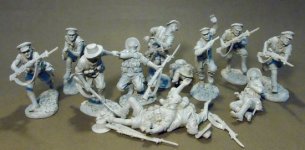
The Gallipoli campaign was a costly failure for the Allies, with an estimated 27,000 French, and 115,000 British and dominion troops (Great Britain and Ireland, Australia, New Zealand, India, and Newfoundland) killed or wounded. Over half these casualties (73,485) were British and Irish troops.
Australian casualties for the Gallipoli campaign amounted to 26,111, comprising of 1,007 officers and 25,104 other ranks.
New Zealand suffered around 8000 killed and wounded.
The Ottoman Empire paid a heavy price for their victory: an estimated 250,000 Turkish and Arab troops were killed or wounded defending Gallipoli.
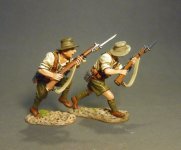
GLA-06W
THE GREAT WAR, 1914-1918,
BATTLE OF GALLIPOLI 1915,
ANZAC’s CHARGING,
(2pcs)
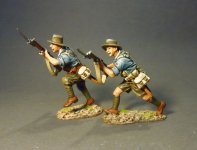
GLA-06B
THE GREAT WAR, 1914-1918,
BATTLE OF GALLIPOLI 1915,
ANZAC’s CHARGING,
(2pcs)
**COMING SOON**
John "Jack" Simpson Kirkpatrick (6 July 1892 – 19 May 1915), who served under the name John Simpson, was a stretcher bearer with the Australian and New Zealand Army Corps (ANZAC) during the Gallipoli Campaign in World War I. After landing at Anzac Cove on 25 April 1915, he obtained a donkey, who he called “Murphy” and began carrying wounded British Empire soldiers from the front line to the beach, for evacuation.
He continued this work for three and a half weeks, often under fire, until he was killed, during the Third attack on Anzac Cove.
Simpson and his Donkey are a part of the "Anzac legend".
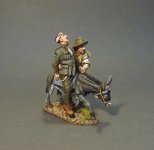
Some of the terrain was so rough that it was impossible for stretcher bearers to evacuate the wounded. This “digger” even retains his rifle with fixed bayonet, as he carries his mate to safety.
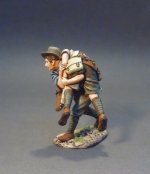
**PLEASE CONTACT YOUR LOCAL DEALER FOR FURTHER INFORMATION**
With World War I stalled on the Western Front by 1915, the Allied Powers were debating going on the offensive in another region of the conflict, rather than continuing with attacks in Belgium and France. Early that year, Russia’s Grand Duke Nicholas appealed to Britain for aid in confronting a Turkish invasion in the Caucasus. (The Ottoman Empire had entered World War I on the side of the Central Powers, Germany and Austria-Hungary, by November 1914.) In response, the Allies decided to launch a naval expedition to seize the Dardanelles Straits, a narrow passage connecting the Aegean Sea to the Sea of Marmara in northwestern Turkey. If successful, capture of the straits would allow the Allies to link up with the Russians in the Black Sea, where they could work together to knock Turkey out of the war.
The Gallipoli Campaign of 1915-16, also known as the Battle of Gallipoli or the Dardanelles Campaign, was an unsuccessful attempt by the Allied Powers to control the sea route from Europe to Russia during World War I. The campaign began with a failed naval attack by British and French ships on the Dardanelles Straits in February-March 1915 and continued with a major land invasion of the Gallipoli Peninsula on April 25, involving British and French troops as well as divisions of the Australian and New Zealand Army Corps (ANZAC). Lack of sufficient intelligence and knowledge of the terrain, along with a fierce Turkish resistance, hampered the success of the invasion. By mid-October, Allied forces had suffered heavy casualties and had made little headway from their initial landing sites. Evacuation began in December 1915, and was completed early the following January.

The Gallipoli campaign was a costly failure for the Allies, with an estimated 27,000 French, and 115,000 British and dominion troops (Great Britain and Ireland, Australia, New Zealand, India, and Newfoundland) killed or wounded. Over half these casualties (73,485) were British and Irish troops.
Australian casualties for the Gallipoli campaign amounted to 26,111, comprising of 1,007 officers and 25,104 other ranks.
New Zealand suffered around 8000 killed and wounded.
The Ottoman Empire paid a heavy price for their victory: an estimated 250,000 Turkish and Arab troops were killed or wounded defending Gallipoli.

GLA-06W
THE GREAT WAR, 1914-1918,
BATTLE OF GALLIPOLI 1915,
ANZAC’s CHARGING,
(2pcs)

GLA-06B
THE GREAT WAR, 1914-1918,
BATTLE OF GALLIPOLI 1915,
ANZAC’s CHARGING,
(2pcs)
**COMING SOON**
John "Jack" Simpson Kirkpatrick (6 July 1892 – 19 May 1915), who served under the name John Simpson, was a stretcher bearer with the Australian and New Zealand Army Corps (ANZAC) during the Gallipoli Campaign in World War I. After landing at Anzac Cove on 25 April 1915, he obtained a donkey, who he called “Murphy” and began carrying wounded British Empire soldiers from the front line to the beach, for evacuation.
He continued this work for three and a half weeks, often under fire, until he was killed, during the Third attack on Anzac Cove.
Simpson and his Donkey are a part of the "Anzac legend".

Some of the terrain was so rough that it was impossible for stretcher bearers to evacuate the wounded. This “digger” even retains his rifle with fixed bayonet, as he carries his mate to safety.

**PLEASE CONTACT YOUR LOCAL DEALER FOR FURTHER INFORMATION**


